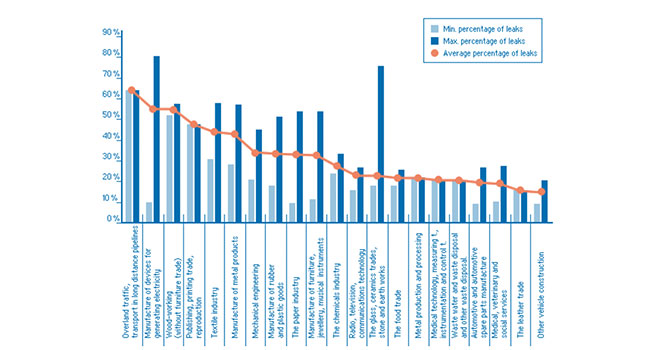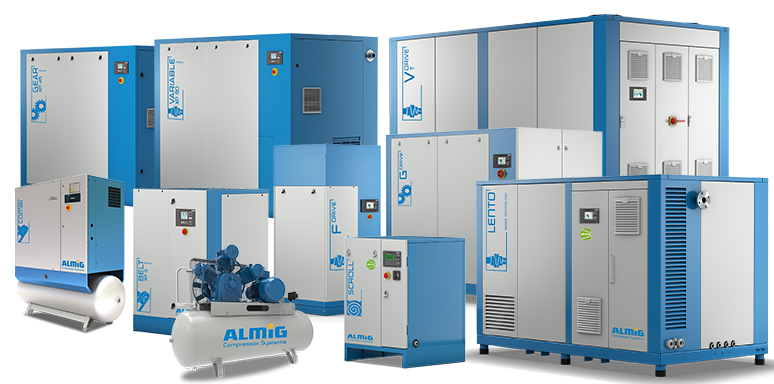Is your compressed air system still completely tight?
Analyses confirm that there are leaks in every compressed air station and that enormous quantities of compressed air, in which you have invested a lot of expensive electrical energy, are lost on the way from the compressed air generator to the compressed air consumer.
As part of the "Compressed Air Efficient" measurement campaign, a large number of companies from diverse industries have been analyzed.
The result:
The average leakage rate was about 25%; the "proud" front-runner had a leakage rate of about 80%, or in other words, out of 100 kWh, this company blew 80 kWh back uselessly into the atmosphere.
Leakage points in the overall compressed air system, i.e. in the distribution line or at the various connection points to the consumer, represent a high cost factor. The leaks act like nozzles from which the air escapes at enormous speed.
Since escaping air is invisible and odorless and poses no direct danger, it is usually not treated with similar attention as, for example, a leak in a water pipe. The increased volume flow requirement caused by the leaks leads to higher energy costs for compressed air generation.
The following table gives an impression of the extent of leakage-related energy costs.
As you can see, even a small leakage of only 5 mm diameter (total hole diameter of many small leaks, which add up to 5 mm) in a 12 bar compressed air network has fatal consequences, i.e. air losses of 58.5 l/s for the generation of which you have to spend more than 16,000 €/year.
The first step towards optimization (i.e. energy savings) is to determine the amount of leakage.
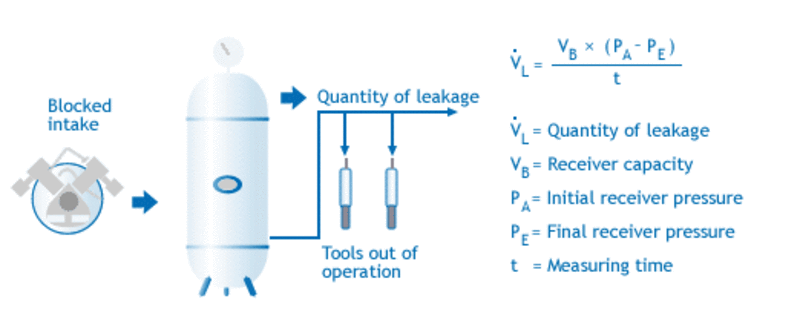
1.) Determination of leakage by pressure vessel emptying:
The amount of leakage in a compressed air system can be measured approximately by pressure vessel emptying.
This involves measuring the period during which the pressure drops by, for example, 1 bar. During the measurement, the vessel is no longer supplied with compressed air.
Assuming that the compressed air flows out isothermally, the leakage quantity of a compressed air system can be approximately determined using the formula opposite.
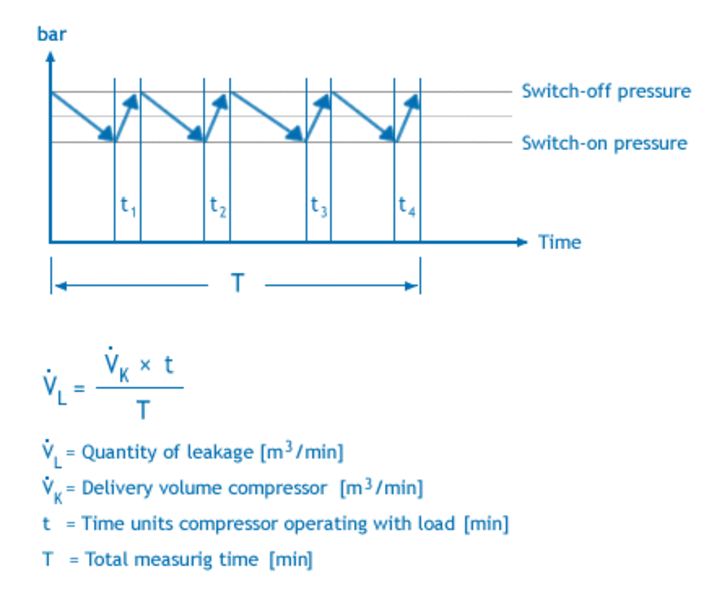
2.) Determination of leakage by compressor running times
The second method to roughly determine the amount of leakage is by compressor duty cycle measurement. This method is only applicable to compressors with intermittent and no-load operation.
The consumers on the network are switched off. Due to the leakage in the system, compressed air is consumed and the mains pressure drops. The compressor must replace this leakage quantity.
The total running time T of the compressor is measured over a measuring time t. To obtain a meaningful result, the measuring time t should cover several switching intervals of the compressor.
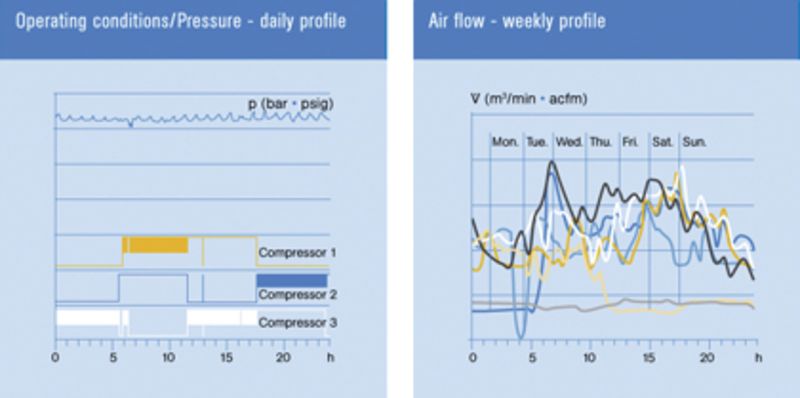
3.) Determination of leakage by compressed air consumption measurements
Another method for determining the amount of leakage is measurement by means of volumetric flow meters (so-called data loggers), which calculate what the compressed air consumption profiles of a compressed air station are via the compressor load cycles.
Existing leakages can also be derived from these measurement data/diagrams.
Most accurate determination; we are also happy to measure your compressed air consumption (measurement period approx. 7 days), because "knowing is better than guessing".
Localization of leaks:
Determining the amount of leakage and where it occurs is easy in many cases, and remediation is often relatively inexpensive, especially considering that approximately 70% of compressed air leakage occurs in the last 30% of the compressed air system.
Options for leak detection include:
- Soaping of the compressed air connections
- Noise generation
- Ultrasonic measuring devices
Particular weak points are
- leaking quick couplings
- leaking connection hoses to the respective compressed air consumers
- Use of obsolete condensate traps (float traps, time-controlled solenoid valves)
- Obsolete compressed air consumers (e.g. overblowing compressed air tools)
- "dissolved" seals on pneumatic control elements
- and many more


